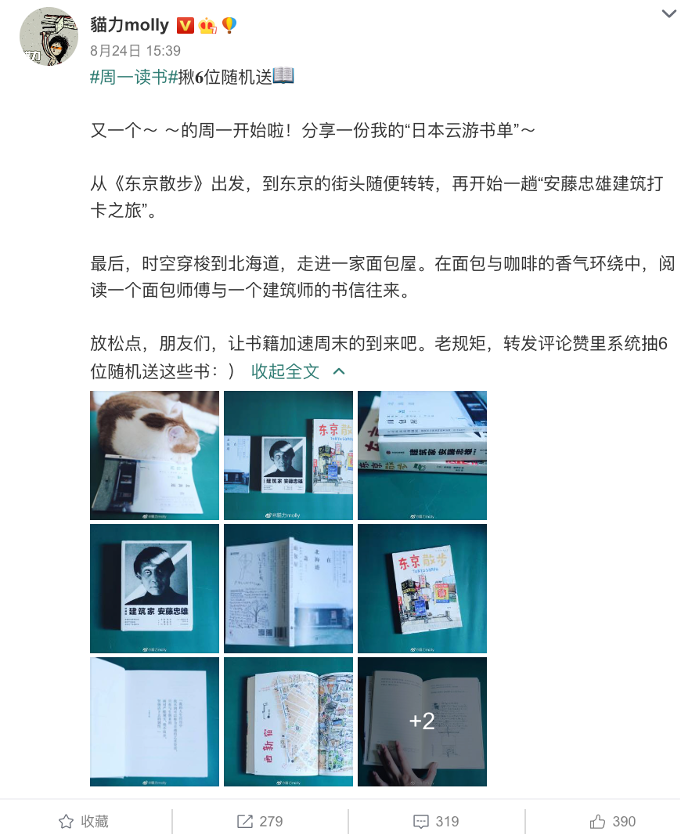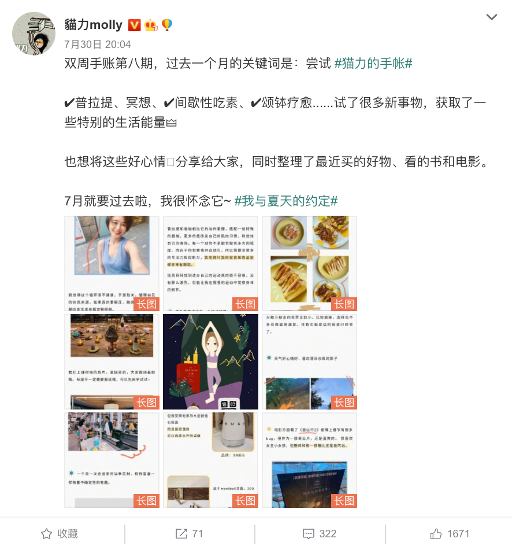The global pandemic has forced China’s travel influencers to evolve or risk irrelevancy. Those willing to adopt new roles are thriving and strengthening the bond with their followers. While this time is challenging, it has revealed new influencer skills as well as new partnership opportunities.
Here are three ways China’s travel influencers are adapting to today’s travel limitations and keeping it real online.
1. Inner Journey Exploration
China’s travel influencers are going deeper. Many have shared stories about the deep psychological effects of the pandemic. As well-traveled individuals with wider world perspectives, they are providing coping tips to navigate this difficult time. This level of personal storytelling is a departure for some influencers and has given them a more real and down-to-earth persona.
As these travel KOLs embark on public journeys of self-discovery, they’ve taken to sharing more original lifestyle content. From book and movie recommendations to physical activities and good living habits, these influencers are producing and delivering comprehensive and trendy new works.
Take for instance, @猫力Molly, a well-known travel blogger who has nearly 7 million followers on Weibo. She created the hashtag #ReadingonMonday. Here she recommends all kinds of books, including healing novels and educational books on how to manage money, which is a pressing issue during the pandemic.
Her well-planned, yet relaxed and colorful weekends are well received on Weibo. She chats with her followers about how yoga, meditation and vegetarianism have improved her mood and brought balance to her life.

Molly posted a series of Japan travel books, including a book on Japanese architecture and walks in Tokyo. She also launched a lucky draw giving 6 followers the chance to win the named books.
Long-form articles illustrate Molly’s changing lifestyle with yoga, meditation and vegetarianism. 
Molly has strengthened her image as an independent, healthy and visionary influencer.
2. Commercial Co-ops with Lifestyle Brands
China’s travel influencers are leaning into their “realness” and leveraging this trust to recommend lifestyle brands to their fans, especially beauty products, cameras and mobile phones. When recommending a lifestyle or tech product, they will either use previous travel content assets or shoot new pictures or videos on a domestic trip.
This fresh, creative and often humorous new content has fans tuning in for more. For example, travel blogger @我的旅行小马甲, who has over 5.9 million followers on Weibo, started a new beauty column during the pandemic. He’s known for his outdoor adventures and slightly wild reputation, which makes his beauty program entertaining to see.
Consequently, a mobile brand approached him to advocate for its product’s benefits. To authentically promote the phone’s long-battery life and ignite travel interest, @我的旅行小马甲 took on a battery challenge. He explored niche attractions of his hometown city Qingdao and tested “how much battery will be left after I visit all the destinations on this list.” His recap video promoted his beloved city while proving the device’s superior benefits for all of life’s photo worthy adventures.

3. Direct Travel Product Referrals

To stimulate the domestic tourism recovery, KOLs are directly promoting travel packages to support domestic airlines, hotels and resorts. These posts are not seen as too commercial. On the contrary, they are creating space for tourists to reignite their interest in travel and actively exchange opinions. With thoughtful destination recommendations, they’re proving their authority and influence in the market.
For instance, popular travel KOL @闹不闹得住菇, known mainly for arts and culture, is now recommending domestic hotel packages to her 790k Weibo followers. Although the post engagement rate isn’t as high as we expected, we believe there will be offline conversions. Under the posts, we can see a variety of questions regarding the hotel, its location, breakfast, etc. These kind of practical questions indicate interest. As more international routes and destinations reopen, we’ll likely see direct referrals include more overseas packages.
In short, this time has pushed China’s travel influencers to get more active, creative and real online. Those that have succeeded have only strengthened their bond with followers. Once destinations are ready to welcome Chinese travel bloggers again, we’ll have a variety of new influencer marketing opportunities to explore. Destination managers can expect richer storytelling and more consumer brand partnerships.




